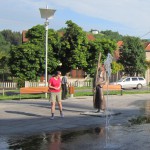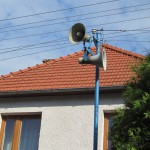Alpine Cycle crossings
We have done two alpine crossings, one at through the Grossglockner alpine road and the other through the Via Claudia Augusta. By far the most popular crossing is the Via Claudia Augusta. We did not encounter any cycling tourists on the Grossglockner alpine road. We encountered many cycling tourists on the Via Claudia Augusta but none were crossing from Italy towards Austria. So the cycle touring traffic was all from the North to the South.
The Via Claudia Reschen pass is in the Tyrol area and the pass summit is at a height of 1,504 meters and the pass road very seldom has ice.
The Grossglockner pass between Carinthia and Tyrol reaches 2,576 meters and is often iced over, and is therefore only passable by cyclists in summer.
The Via Claudia Augusta pass gradient on the Austrian side is more gradual than the gradient on the Italian side. Cyclist only share the pass road with normal traffic on the Austrian side. There are some trucks on the Reschen pass. On the Austrian side there are a number of well-designed overhang tunnels and short tunnels. When we were going down we quickly went through the tunnels, putting our lights on first. As we were not in the tunnels for long we did not encounter much traffic. Going up would be less pleasant, as sharing a tunnel with a truck is not pleasant. As such there are bus shuttles that take bicycles and cyclists over the Reschen Pass on the Austrian side (which defeats the “crossing the Alps” experience).
Cyclists share the Grossglockner road with normal traffic. The gradients on both sides of the Grossglockner are long and steep. There are two short tunnels at the top of the Grossglockner that are ok to pedal through. I think the only trucks on Grossglockner would be road service trucks.
Both passes are beautiful. I found Grossglockner more exhilarating.

